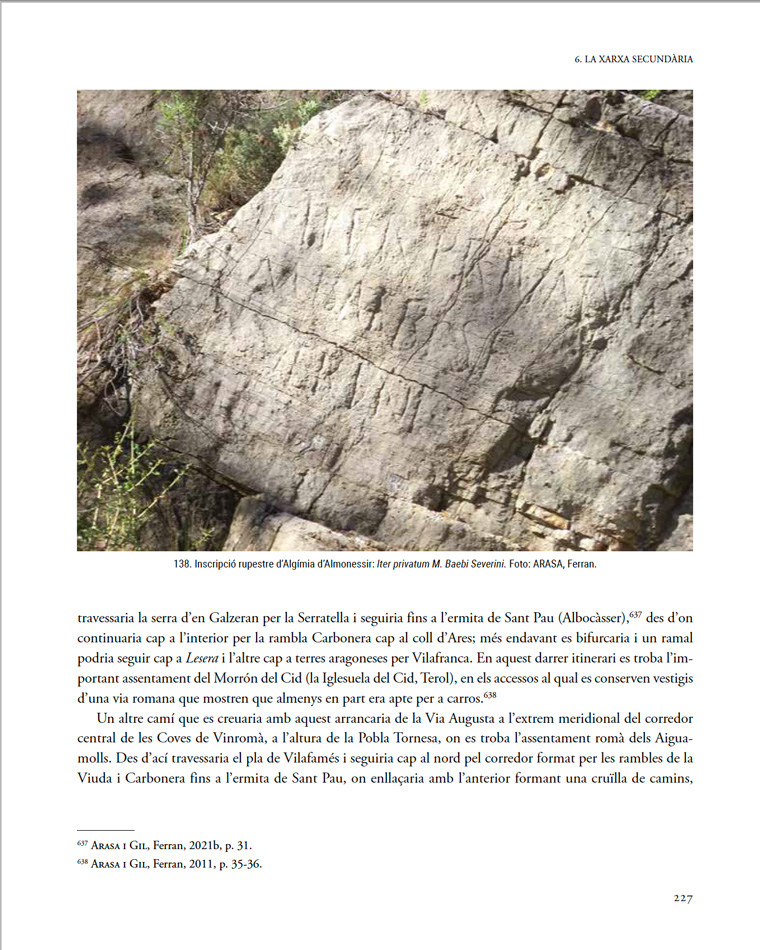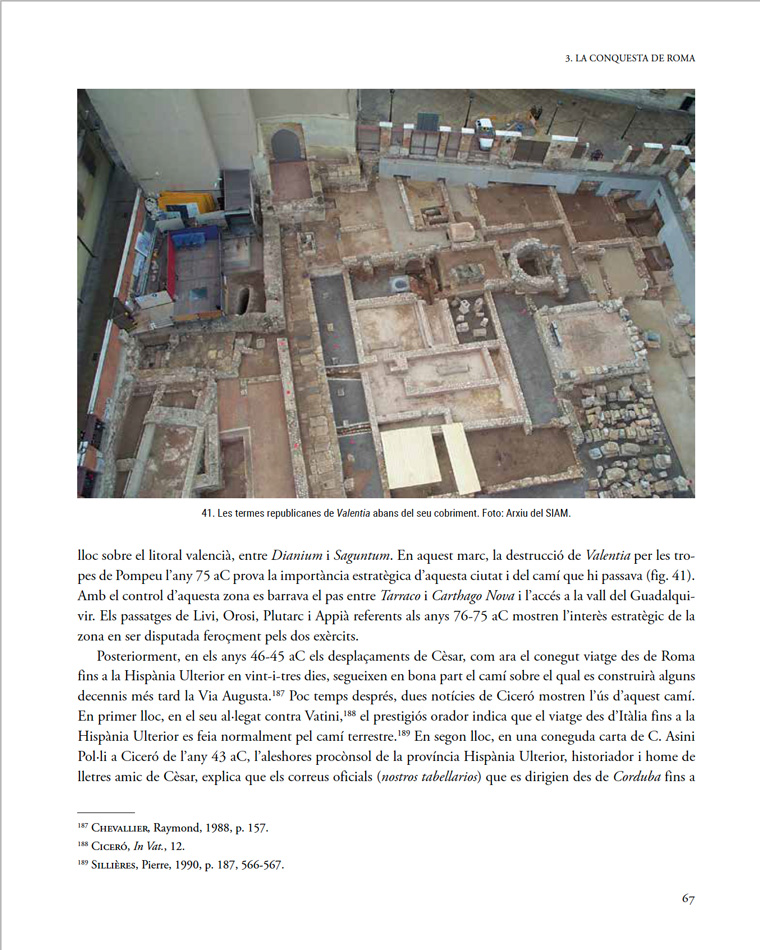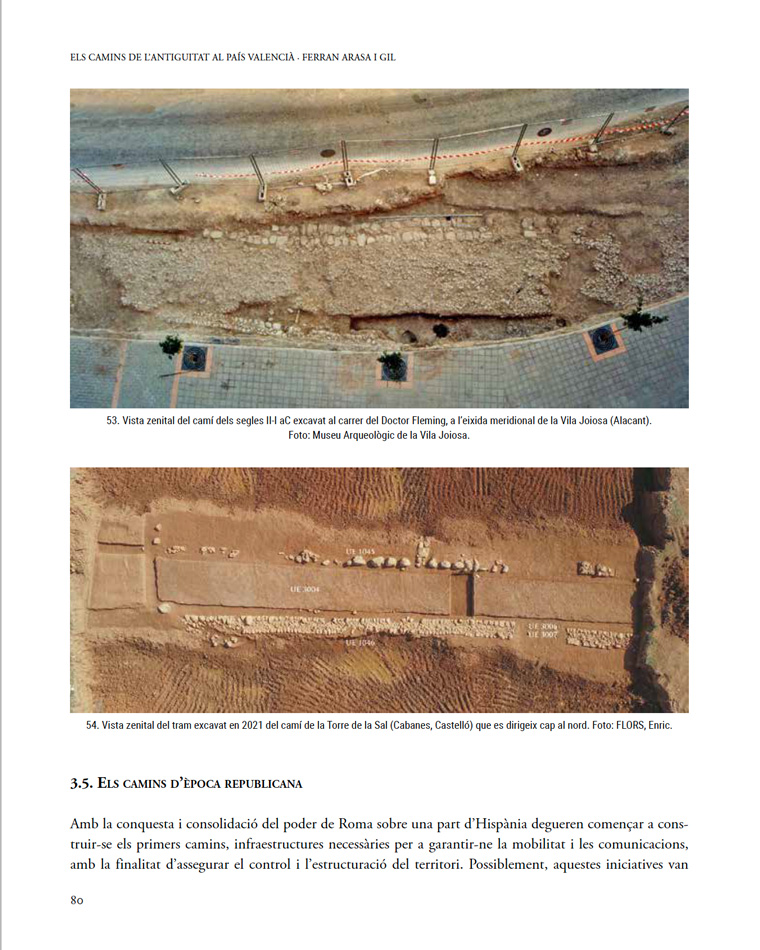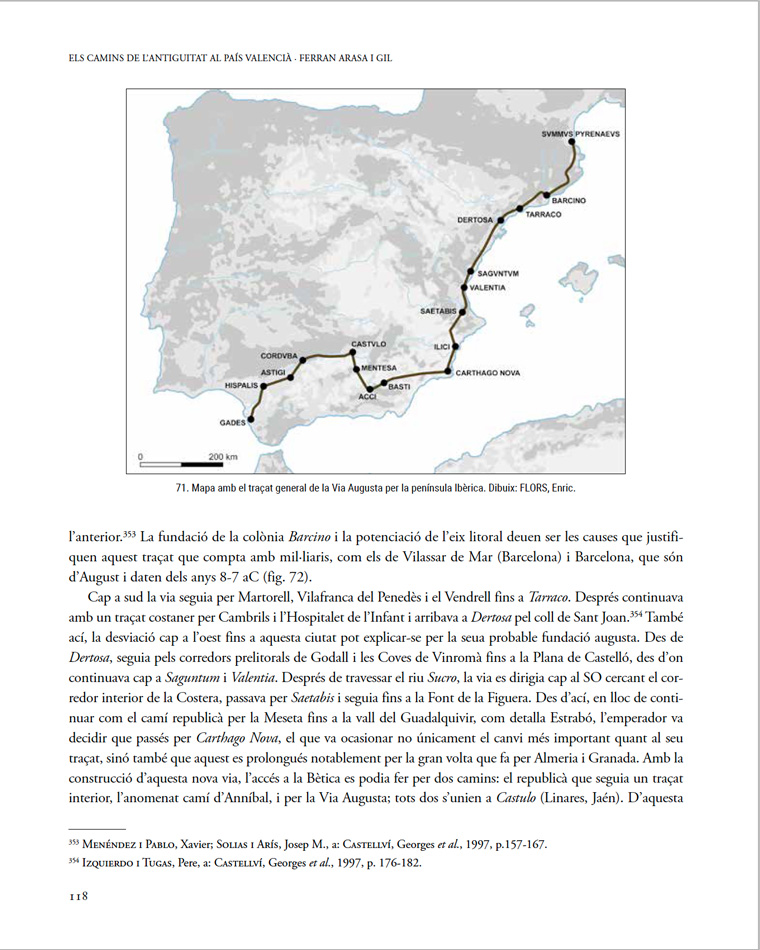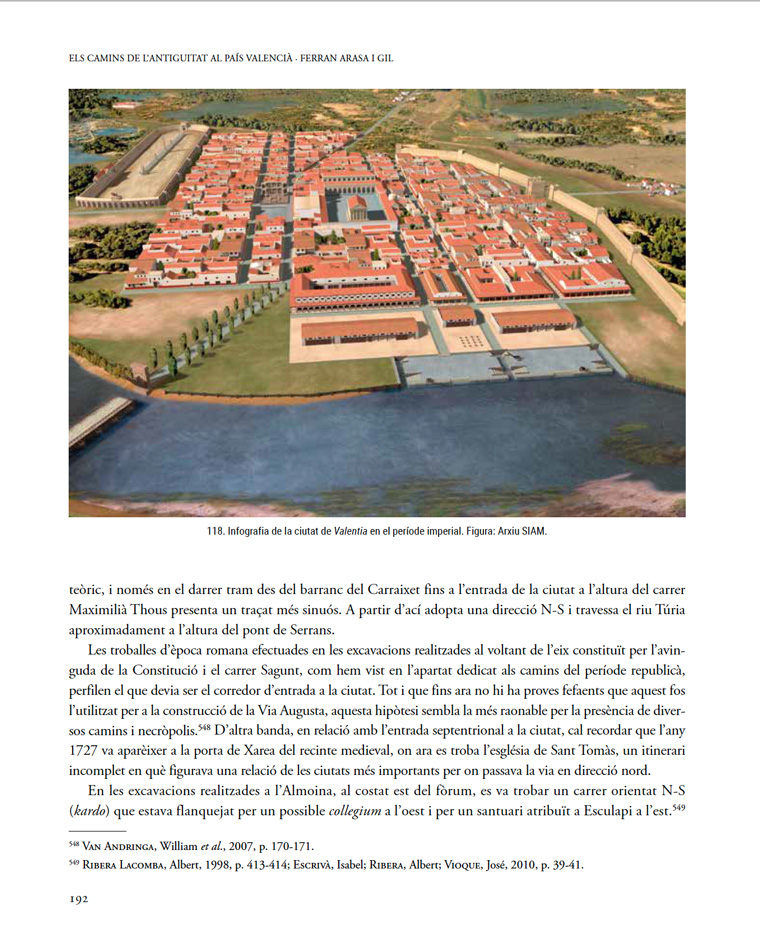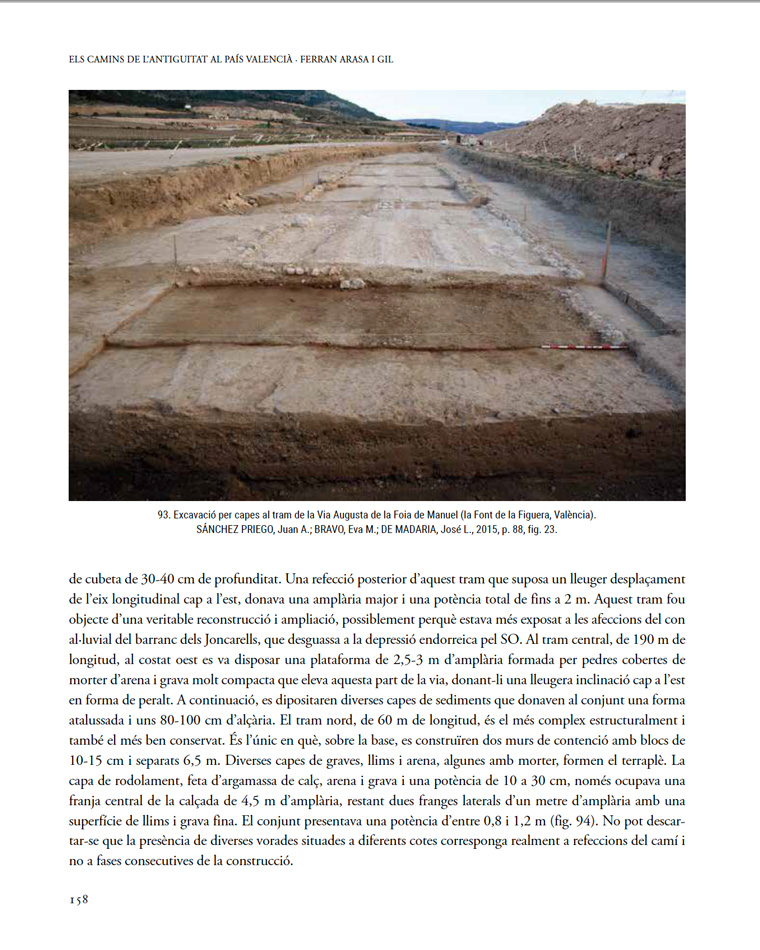The País Valencià's Roads of Antiquity
- Authors: ARASA i GIL, Ferran
- Place, Editorial, Year: València, Ministry of Territory Policies, Territory and Mobility , 2022.
- Publication types: Llibre
-
Abstract:
For archaeology, roads are a specific category of remains produced by human activity as a result of communication needs. In their most developed form, that of communication channels suitable for wheeled vehicles, they have been well identified at least since the Iberian period, and their construction became widespread in Roman times. The form they take as archaeological sites is peculiar, different from others with larger surfaces and concentrated development, such as settlements or necropolises. Roads are linear, narrow and very long sites, and as such present a particular problem for their study and also pose different protection needs. The construction of roads became widespread with the Roman conquest and constituted one of the fundamental pillars of the great territorial reorganisation programmes set in motion at the beginning of the Empire, such as that begun by Augustus in Hispania. This basically consisted of the construction of a series of major strategic axes which - in a highly centralised state - guaranteed communication with the capital, Rome. The far-reaching nature of this programme meant that it continued throughout the 1st century AD, under the reign of different emperors, with the intervention of all the administrations. The work presented here is intended as a state of the art on the history of roads in Antiquity. This work aims to question the history of the pathways of Anquity in the Valencian Country, the Iberian world and the Roman period throughout nine centuries. A relevant novelty is taking a closer look in details that allow to go back the history of some centuries ago to the Iberian era and the first findings of Republican era roads and the transition phase between these two great Mediteranean cultures that interacted with the Valencian lands.
- Physical environment and terrestrisl communication
- Iberian culture
2.1. Source news
2.2. Iberian paths - Conquest of Rome
3.1. Sources: from the 2nd century b.C. to the end of the republic
3.2. First railway action
3.3. Republican life. The archaelogical evience
3.4. Other roads
3.5. Republic era paths - Empire path
4.1. Vehiculatio or cursus publicus
4.2. Itineraries
4.3. Constructive techiques
4.4. River passages - Via Augusta
5.1. Sources
5.2. Posts
5.3. Milestone
5.4. Via Augusta building
5.5. Trace through País Valencià - Secondary network
6.1. Northern regions
6.2. Central regions
6.3. Southern regions
Chapters
Introduction
Conclusions
Details
ISBN: 978-84-482-6751-3






